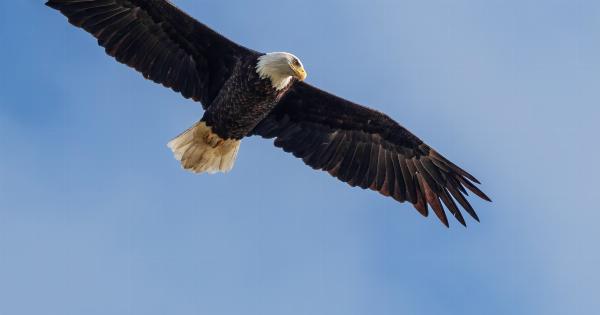Kala-azar, also known as visceral leishmaniasis, is a life-threatening disease caused by the Leishmania donovani parasite. It affects not only humans but also animals, including dogs.
In recent years, the prevalence of kala-azar in dog populations has raised concerns among pet owners and authorities. Consequently, new legal requirements have been enforced to tackle this health issue effectively.
This article explores the various dog breeds that are prone to kala-azar and sheds light on the new legal obligations imposed on dog owners to control its spread and protect both human and canine populations.
Kalazar Dog Breeds
While kala-azar can affect dogs of any breed, certain breeds are more susceptible to this disease. Here are ten dog breeds that are particularly prone to kala-azar:.
1. Labrador Retrievers
Labrador Retrievers are one of the most popular dog breeds worldwide. Unfortunately, they are also more vulnerable to kala-azar due to their genetic predisposition. They often exhibit symptoms such as weight loss, lethargy, and enlarged lymph nodes.
2. Boxers
Boxers are playful and energetic dogs, but they are susceptible to kala-azar. They may develop clinical signs, such as fever, loss of appetite, and skin lesions. Veterinary care should be sought immediately if these symptoms appear.
3. German Shepherds
German Shepherds, known for their intelligence and loyalty, are at a higher risk of developing kala-azar. They may show symptoms like fever, anemia, and ulcers on their skin. Regular preventive measures and screenings are crucial for this breed.
4. Rottweilers
Rottweilers, despite their robust appearance, are prone to kala-azar. Early detection is essential, as infected Rottweilers may experience organ failure, excessive weight loss, and joint inflammation.
5. Golden Retrievers
Golden Retrievers, beloved for their friendly and sociable nature, can also fall victim to kala-azar. This breed might exhibit symptoms such as weakness, swollen abdomen, and pale gums. Prompt veterinary attention is necessary for their well-being.
6. Dalmatians
Dalmatians, known for their distinctive coat pattern, are at risk of contracting kala-azar. Symptoms may include persistent cough, enlarged spleen, and skin rashes. Routine screenings and appropriate preventive measures are imperative.
7. Doberman Pinschers
Doberman Pinschers, renowned for their loyalty and protectiveness, can also be affected by kala-azar. It is crucial to monitor them for symptoms like fever, malaise, and unexplained weight loss to ensure early intervention.
8. Bloodhounds
Bloodhounds, known for their exceptional tracking abilities, are also among the breeds susceptible to kala-azar.
Regular parasite preventive treatments and vigilant observation of symptoms like depression and swollen lymph nodes are essential for their health.
9. Cocker Spaniels
Cocker Spaniels, with their charming appearance, can fall prey to kala-azar. Dog owners should be vigilant for symptoms such as anorexia, increased drinking, and irregular bowel movements to provide timely medical care.
10. Afghan Hounds
Afghan Hounds, famous for their luxurious coats, are susceptible to kala-azar. They may display clinical signs such as severe weight loss, ocular abnormalities, and diarrhea. Regular screening and preventive measures are vital to ensure their well-being.
The New Legal Requirements
To combat the spread of kala-azar and protect both human and canine populations, new legal requirements have been introduced for dog owners. These requirements aim to ensure early detection, effective treatment, and prevention of the disease.
Here are some of the new legal obligations for dog owners:.
1. Mandatory Vaccination
Under the new regulations, it is mandatory for dog owners to have their pets vaccinated against kala-azar. Vaccination plays a crucial role in preventing the transmission of the disease and reducing its prevalence.
Regular booster shots should be administered as recommended by veterinarians.
2. Regular Screening
Dog owners must ensure regular screening of their pets for kala-azar. This involves tests to detect the presence of the Leishmania donovani parasite in the dog’s blood.
Early detection allows for timely treatment and prevents the spread of the disease to other animals and humans.
3. Effective Treatment
If a dog is diagnosed with kala-azar, it is essential for the owners to provide prompt and effective treatment.
Treatment options may include medications to kill the parasite, supportive care to manage symptoms, and follow-up veterinary visits to monitor the dog’s progress.
4. Control of Vectors
Controlling the vectors responsible for transmitting kala-azar is another crucial requirement. Dog owners should take measures to reduce the presence of sandflies, which carry and transmit the parasite.
This can be achieved by implementing proper sanitation practices and using insect repellents.
5. Public Awareness
The new legal requirements also emphasize the need for public awareness about kala-azar and its impact on both human and canine health.
Dog owners should educate themselves and others about the importance of preventive measures, vaccination, and the signs and symptoms of the disease.
Conclusion
Kala-azar, a life-threatening disease caused by the Leishmania donovani parasite, poses a significant threat to both humans and dogs.
Understanding the dog breeds that are more susceptible to kala-azar can help prioritize preventive measures and early detection. The enforcement of new legal requirements provides a framework to control the spread of the disease and protect the wellbeing of canine populations.
By adhering to these obligations, dog owners can contribute to the overall effort in combating kala-azar effectively.






























